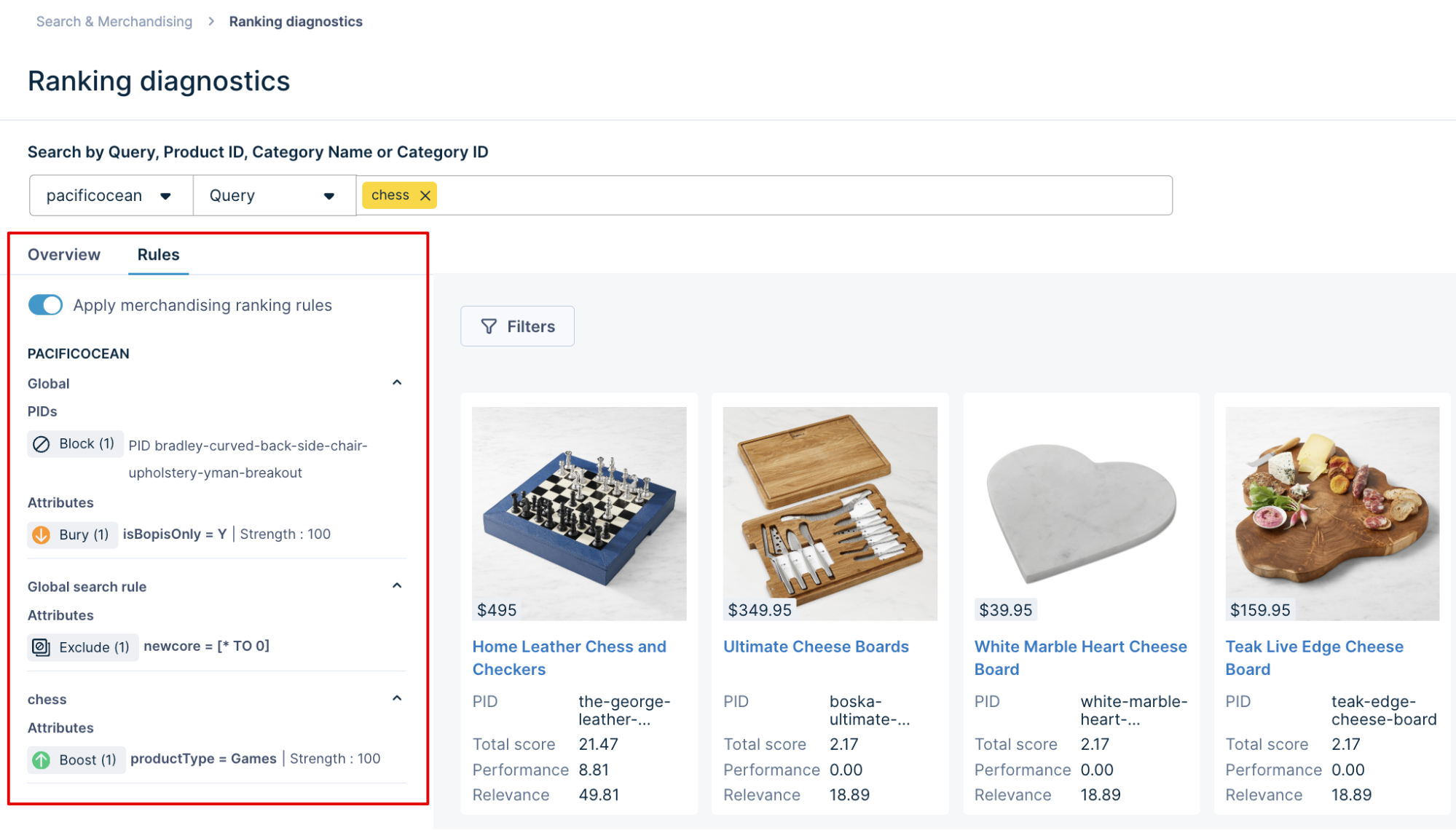🚀 Release 2025-11
Release date: January 30, 2025
TL;DR: New enhancements in Ranking diagnostics. Fixed bugs to enhance performance.

⚡Improvements
View impact of ranking rules in Ranking diagnostics
We are excited to share that the Ranking diagnostics tool now shows how different ranking rules affect each search result.
What’s new?
-
The refreshed UI for the Ranking diagnostics dashboard offers a consistent experience with the Visual editor.
-
A new “Rules” tab displays the impact of various PID-based or attribute-based ranking rules.
-
All the global and local rules that apply to the current search are shown, along with the number of products each operation affects.

The Rules tab in the diagnostics report
Why is this valuable?
- Reviewing the exact impact of multiple ranking rules will aid in debugging searches and rules.
- More transparency on the factors affecting search results can help identify the causes behind unexpected results.
View the documentation article to learn more.
What’s coming next?
In the upcoming releases, we plan to enable you to turn individual ranking rules on/off to view their impact in the Ranking diagnostics tool. This will be followed by more updates to improve the overall debugging experience!
🐛 Bug fixes
We have fixed the following issues:
- Site-level synonyms in staging couldn't be cloned to the production environment.
- Disabled synonyms were incorrectly displayed in Ranking diagnostics.
- The category ranking rules homepage showed an error instead of loading the page data.
- Some category ranking rules displayed a “Failed to load” error.
- The visual editor did not display the complete product titles.
- Product collections analytics displayed identical data for three separate site groups.
- The top keywords report did not load as expected when switching between the account and site-level contexts.
